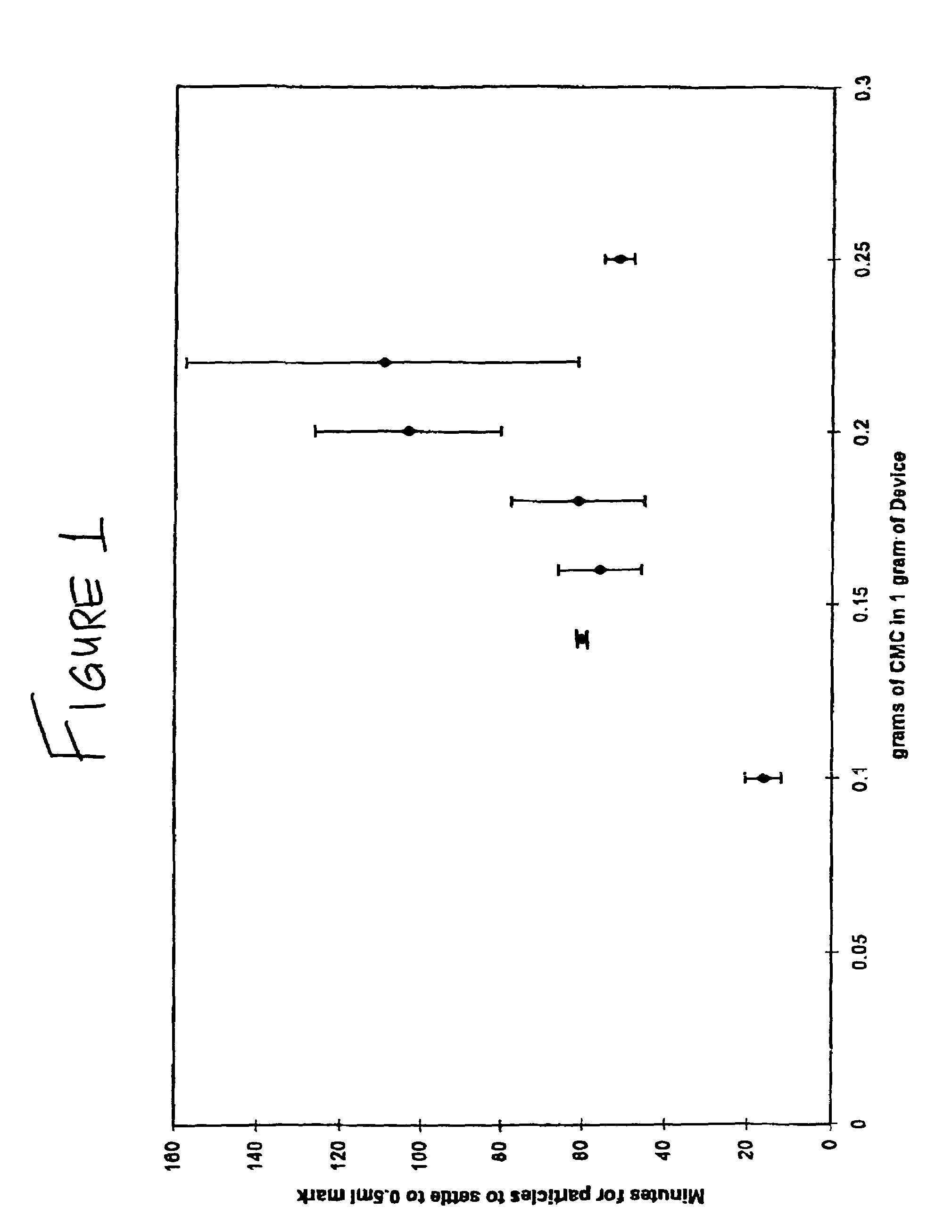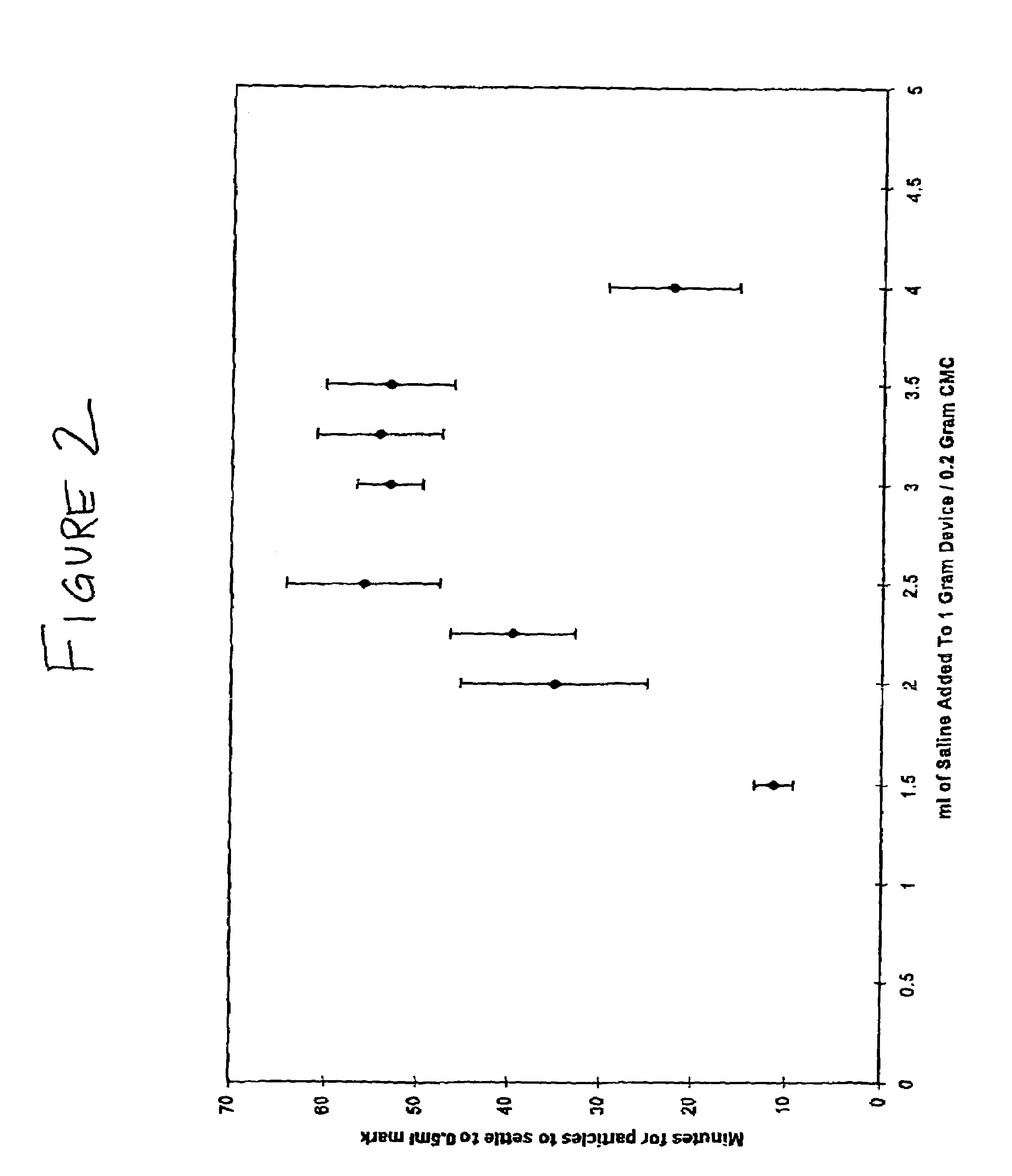Osteogenic devices and methods of use thereof for repair of endochondral bone and osteochondral defects
a technology of osteochondral bone and osteochondral defect, which is applied in the field of osteogenic protein-based materials and methods for repairing bone and cartilage defects, can solve problems that have been ignored or neglected, achieve the effects of restoring osteochondral or chondral defect, avoiding undesirable formation, and promoting and enhancing the rate and/or quality of new bone formation
- Summary
- Abstract
- Description
- Claims
- Application Information
AI Technical Summary
Benefits of technology
Problems solved by technology
Method used
Image
Examples
experiment 1
[0128]1. Experiment 1 Unitary Device Configuration (Dogs)
[0129]This study illustrates the efficacy of OP-1 combined with collagen matrix and carboxymethylcellulose for repairing critical-size ulna segmental defects in the art-recognized canine model.
[0130]Briefly, the data set forth below indicate at least comparable radiographic healing at sites that received a CMC / OP-1 device relative to segmental defects treated with the standard OP device. The final radiographic grade (maximum=6.0) for defects treated with CMC / OP-1 was 5.33±0.58 compared to 4.67±0.58 for defect receiving the standard OP-1 device. In general, new bone formation was evident as early as two weeks post-operative in all defects. The new bone continued to densify, consolidate and remodel until sacrifice at twelve post-operative weeks. The mean load to failure of the defects treated with the CMC / OP-1 device was 59.33 N±26.77. This was 70% of the mean load to failure of the contralateral sides which received the standar...
experiment 2
[0245]2. Experiment 2
Goat Fracture Study Using Varying Doses of OP-1 at Varying Times (Closed Defect Site)
[0246]This independent study also uses goats as the animal model for studying repair of fracture defects using improved osteogenic devices. Using techniques similar to those described above, fresh closed diaphyseal fractures (mostly transverse and simple oblique) with reduction with external fixation and distraction to 5 mm are treated using CMC-containing osteogenic devices.
[0247]The study design is as follows:
[0248]
GroupTreatmentNo. GoatsINo injection10IICMC + collagen alone via injection10IIICMC + collagen + OP-1 (2.5 mg10OP-1 / 1000 mg collagen) via injectionIVCMC + collagen + OP-1 (half-maximal10dosage of 1.25 mg OP-1 / 1000 mg collagen)via injection
Five goats in each group are sacrificed at 2 weeks post-treatment and five goats in each group are sacrificed at 4 weeks post-treatment.
[0249]Other related studies investigate repair of fracture defects at time points greater than 4...
PUM
| Property | Measurement | Unit |
|---|---|---|
| Fraction | aaaaa | aaaaa |
| Fraction | aaaaa | aaaaa |
| Percent by mass | aaaaa | aaaaa |
Abstract
Description
Claims
Application Information
 Login to View More
Login to View More - R&D
- Intellectual Property
- Life Sciences
- Materials
- Tech Scout
- Unparalleled Data Quality
- Higher Quality Content
- 60% Fewer Hallucinations
Browse by: Latest US Patents, China's latest patents, Technical Efficacy Thesaurus, Application Domain, Technology Topic, Popular Technical Reports.
© 2025 PatSnap. All rights reserved.Legal|Privacy policy|Modern Slavery Act Transparency Statement|Sitemap|About US| Contact US: help@patsnap.com


